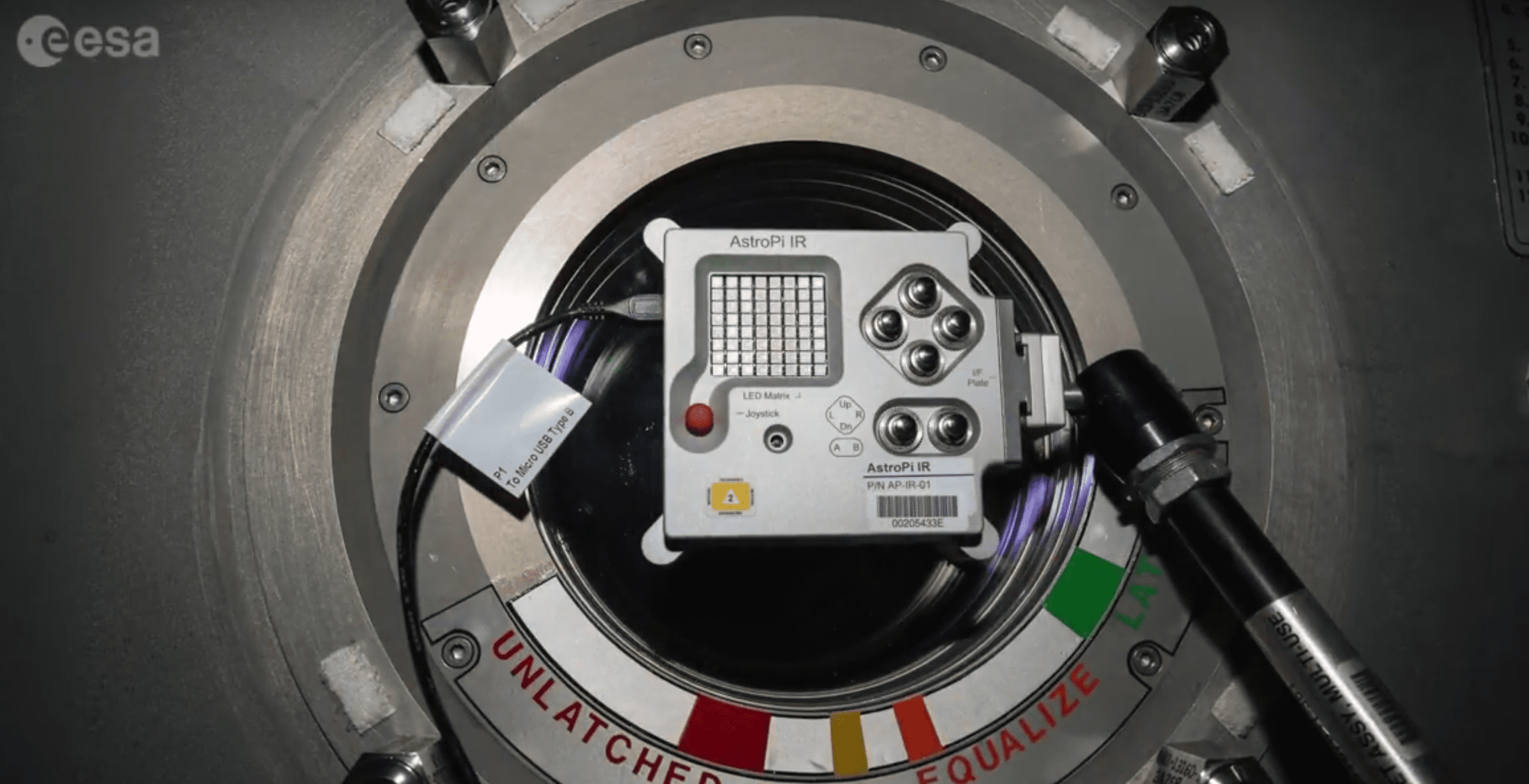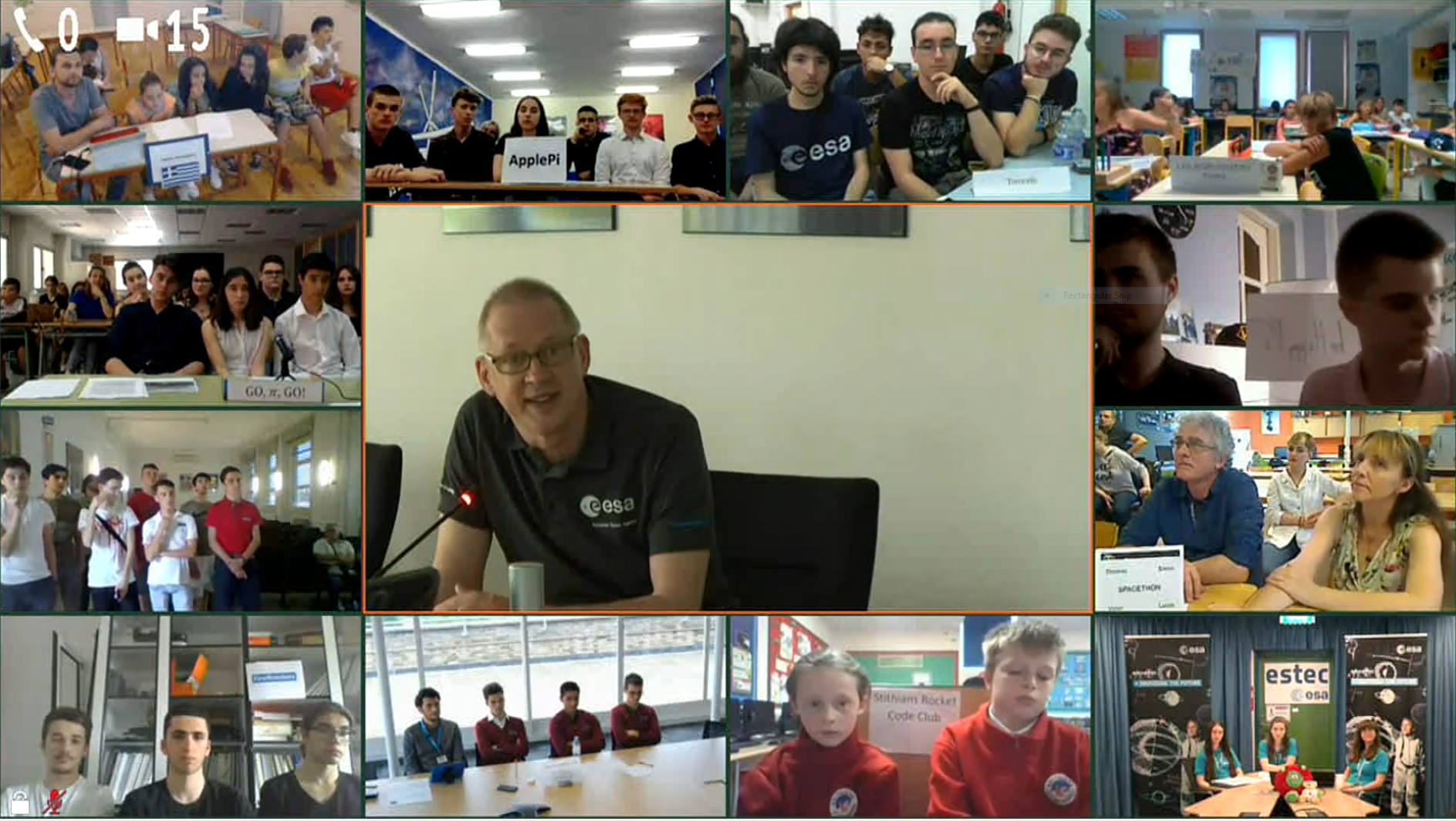This is your periodic reminder that there are two Raspberry Pi computers in space! That’s right — our Astro Pi units Ed and Izzy have called the International Space Station home since 2016, and we are proud to work with ESA Education to run the European Astro Pi Challenge, which allows students to conduct scientific investigations in space, by writing computer programs.

An Astro Pi takes photos of the earth from the window of the International Space Station
The Challenge has two missions: Mission Zero and Mission Space Lab. The more advanced one, Mission Space Lab, invites teams of students and young people under 19 years of age to enter by submitting an idea for a scientific experiment to be run on the Astro Pi units.
ESA and the Raspberry Pi Foundation would like to congratulate all the teams that participated in the European Astro Pi Challenge this year. A record-breaking number of more than 15000 people, from all 22 ESA Member States as well as Canada, Slovenia, and Malta, took part in this year’s challenge across both Mission Space Lab and Mission Zero!
Eleven teams have won Mission Space Lab 2018–2019
After designing their own scientific investigations and having their programs run aboard the International Space Station, the Mission Space Lab teams spent their time analysed the data they received back from the ISS. To complete the challenge, they had to submit a short scientific report discuss their results and highlight the conclusions of their experiments. We were very impressed by the quality of the reports, which showed a high level of scientific merit.
We are delighted to announce that, while it was a difficult task, the Astro Pi jury has now selected eleven winning teams, as well as highly commending four additional teams. The eleven winning teams won the chance to join an exclusive video call with ESA astronaut Frank De Winne. He is the head of the European Astronaut Centre in Germany, where astronauts train for their missions. Each team had the once-in-a-lifetime chance to ask Frank about his life as an astronaut.
And the winners are…
Firewatchers from Post CERN HSSIP Group, Portugal, used a machine learning method on their images to identify areas that had recently suffered from wildfires.
Go, 3.141592…, Go! from IES Tomás Navarro Tomás, Spain, took pictures of the Yosemite and Lost River forests and analysed them to study the effects of global drought stress. They did this by using indexes of vegetation and moisture to assess whether forests are healthy and well-preserved.
Les Robotiseurs from Ecole Primaire Publique de Saint-André d’Embrun, France, investigated variations in Earth’s magnetic field between the North and South hemispheres, and between day and night.
TheHappy.Pi from I Liceum Ogólnokształcące im. Bolesława Krzywoustego w Słupsku, Poland, successfully processed their images to measure the relative chlorophyll concentrations of vegetation on Earth.
AstroRussell from Liceo Bertrand Russell, Italy, developed a clever image processing algorithm to classify images into sea, cloud, ice, and land categories.
Les Puissants 2.0 from Lycee International de Londres Winston Churchill, United Kingdom, used the Astro Pi’s accelerometer to study the motion of the ISS itself under conditions of normal flight and course correction/reboost maneuvers.
Torricelli from ITIS “E.Torricelli”, Italy, recorded images and took sensor measurements to calculate the orbital period and flight speed of the ISS followed by the mass of the Earth using Newton’s universal law of gravitation.
ApplePi from I Liceum Ogólnokształcące im. Króla Stanisława Leszczyńskiego w Jaśle, Poland, compared their images from Astro Pi Izzy to historical images from 35 years ago and could show that coastlines have changed slightly due to erosion or human impact.
Spacethon from Saint Joseph La Salle Pruillé Le Chétif, France, tested their image-processing algorithm to identify solid, liquid, and gaseous features of exoplanets.
Stithians Rocket Code Club from Stithians CP School, United Kingdom, performed an experiment comparing the temperature aboard the ISS to the average temperature of the nearest country the space station was flying over.
Vytina Aerospace from Primary School of Vytina, Greece, recorded images of reservoirs and lakes on Earth to compare them with historical images from the last 30 years in order to investigate climate change.
Highly commended teams
We also selected four teams to be highly commended, and they will receive a selection of goodies from ESA Education and the Raspberry Pi Foundation:
Aguere Team from IES Marina Cebrián, Spain, investigated variations in the Earth’s magnetic field due to solar activity and a particular disturbance due to a solar coronal hole.
Astroraga from CoderDojo Trento, Italy, measured the magnetic field to investigate whether astronauts can still use a compass, just like on Earth, to orient themselves on the ISS.
Betlemites from Escoles Betlem, Spain, recorded the temperature on the ISS to find out if the pattern of a convection cell is different in microgravity.
Rovel In The Space from Scuola secondaria I grado A.Rosmini ROVELLO PORRO(Como), Italy, executed a program that monitored the pressure and would warn astronauts in case space debris or micrometeoroids collided with the ISS.
The next edition is not far off!
ESA and the Raspberry Pi Foundation would like to invite all school teachers, students, and young people to join the next edition of the challenge. Make sure to follow updates on the Astro Pi website and Astro Pi Twitter account to look out for the announcement of next year’s Astro Pi Challenge!
Website: LINK


Schreibe einen Kommentar
Du musst angemeldet sein, um einen Kommentar abzugeben.